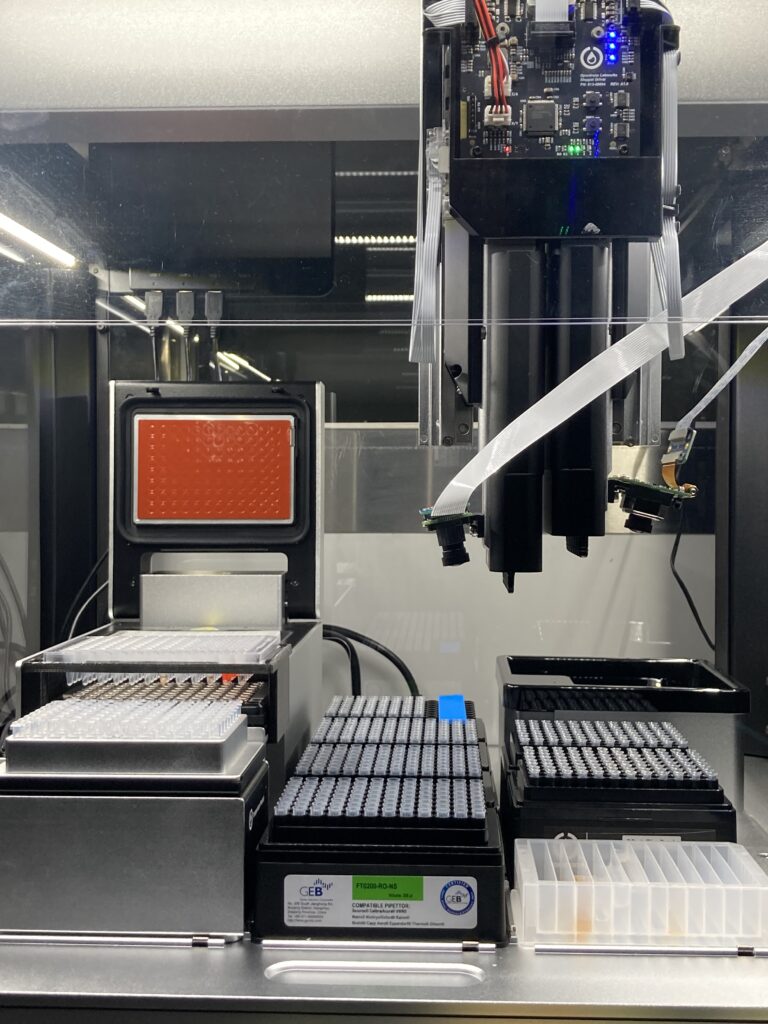
Single-cell RNA sequencing, or scRNAseq, enables transcriptomic analysis at a single-cell resolution, which can inform us of rare but important cell populations. Although the use of scRNA-seq technology has become increasingly popular, the cost remains quite expensive. Beyond the cost of the sequencing platform and each individual run, the library preparation step can also be costly as well as labor-intensive. Automating the library prep step provides many benefits, such as reducing variability and reallocating a researcher’s precious time for designing experiments or analyzing data. Currently, automated library prep for scRNAseq can cost upwards of $260,000, which is typically out of the budget for smaller-scaled research laboratories. However, Retro Biosciences has innovatively “hacked” Opentron’s OT-2 robot to automate library prep at a cost of only $26,000! Retro Biosciences is a start-up based in Redwood City, California with a focus on plasma-inspired therapeutics, cellular reprogramming, and autophagy. Continue reading for our Q&A with Retro Biosciences regarding this creative feat!

Q: What is Retro Biosciences and why is what you are doing so important?
A: Retro Biosciences was formed to initially develop curative therapeutics and, later, preventative medicines to address cellular aging. While most aging-biology companies focus on a single aging mechanism, Retro Biosciences is a multiprogram company ambitiously exploring three: cellular reprogramming, autophagy, and plasma-inspired therapeutics. Aging mechanisms give rise to over 80% of the disease burden in our hospitals, so finding therapies that address them directly will make a huge contribution.
Q: How is automation helping you achieve your goals?
A: Machines are tireless, fast, and accurate. We are exploring unknown biology, and some of these explorations are across such a breadth of parameters, including combinations, that exploring them manually would be a waste of scientific minds.
Q: You created a really cool – and incredibly affordable – solution for automating single cell RNAseq library prep. Tell us why and how you did it?
A: It was a starter project for us. The best bets on processes to automate are the ones you expect to vary the least and use the most. We do a LOT of single-cell RNAseq here. We approached the task as a kind of puzzle. We had to develop new software capabilities (e.g. liquid-level-specific pipetting) and hardware capabilities (e.g. an improved magnetic separation system), and then we did testing alongside humans on parallel aliquots on some of our 10x runs. One of the most powerful meta-methods we created was the pipetteCam, which allowed us to review all steps in a protocol visually, to find bugs and verify quality.
Q: You published this work on Github and it’s attracting some buzz! Why did you decide to make this work public? And what has the response been like?
A: Our philosophy is to publish things that float all boats. The benefit to society for lower costs across a wide range of biological research outweighs for us the narrow concern that it also would help our competitors in our specific research areas.
Q: Do you have advice for others who want to follow your online instructions and create their own system?
A: Replication is an unsolved problem in lab automation. This will be difficult and the first thing you should do is reach out to [email protected]. Once you have something working on your own system, publishing the developer tools you created or improved along the way will help us make the process easier for others following in our footsteps. Good luck!
In summary, Retro Biosciences fulfills Opentron’s mission by demonstrating the accessibility to automation via the OT-2 robot. Our open-source automation program can be programmed to do just about anything a researcher needs while keeping costs low. We were blown away by the innovation led by Retro Biosciences and cannot wait to see how they innovate next.